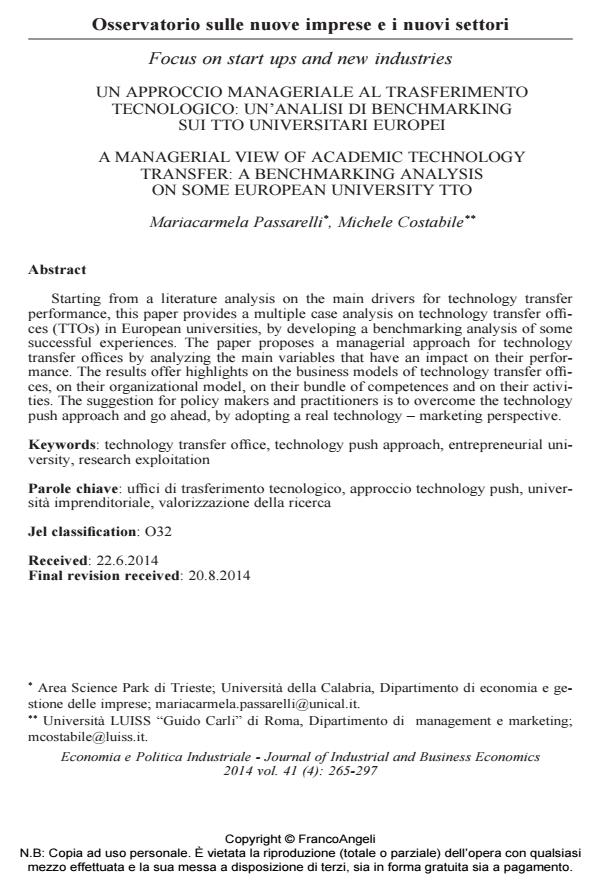Un approccio manageriale al trasferimento tecnologico: un’analisi di benchmarking sui TTO universitari europei
Titolo Rivista ECONOMIA E POLITICA INDUSTRIALE
Autori/Curatori Mariacarmela Passarelli, Michele Costabile
Anno di pubblicazione 2014 Fascicolo 2014/4
Lingua Italiano Numero pagine 34 P. 265-298 Dimensione file 107 KB
DOI 10.3280/POLI2014-004012
Il DOI è il codice a barre della proprietà intellettuale: per saperne di più
clicca qui
Qui sotto puoi vedere in anteprima la prima pagina di questo articolo.
Se questo articolo ti interessa, lo puoi acquistare (e scaricare in formato pdf) seguendo le facili indicazioni per acquistare il download credit. Acquista Download Credits per scaricare questo Articolo in formato PDF

FrancoAngeli è membro della Publishers International Linking Association, Inc (PILA)associazione indipendente e non profit per facilitare (attraverso i servizi tecnologici implementati da CrossRef.org) l’accesso degli studiosi ai contenuti digitali nelle pubblicazioni professionali e scientifiche
Starting from a literature analysis on the main drivers for technology transfer performance, this paper provides a multiple case analysis on technology transfer offices (TTOs) in European universities, by developing a benchmarking analysis of some successful experiences. The paper proposes a managerial approach for technology transfer offices by analyzing the main variables that have an impact on their performance. The results offer highlights on the business models of technology transfer offices, on their organizational model, on their bundle of competences and on their activities. The suggestion for policy makers and practitioners is to overcome the technology push approach and go ahead, by adopting a real technology - marketing perspective.
Parole chiave:Uffici di trasferimento tecnologico, approccio technology push, università imprenditoriale, valorizzazione della ricerca
Jel codes:O32
- Organizational Design, Family Business and 'Good' Conflict: A Theoretical Model Mario Pezzillo Iacono, Alessia Berni, in SSRN Electronic Journal /2012
DOI: 10.2139/ssrn.2115395 - Cultural Due Diligence as a Proactive Strategy of Organisational Change: An Empirical Analysys Mario Pezzillo Iacono, in SSRN Electronic Journal /2012
DOI: 10.2139/ssrn.2115444
Mariacarmela Passarelli, Michele Costabile, Un approccio manageriale al trasferimento tecnologico: un’analisi di benchmarking sui TTO universitari europei in "ECONOMIA E POLITICA INDUSTRIALE " 4/2014, pp 265-298, DOI: 10.3280/POLI2014-004012